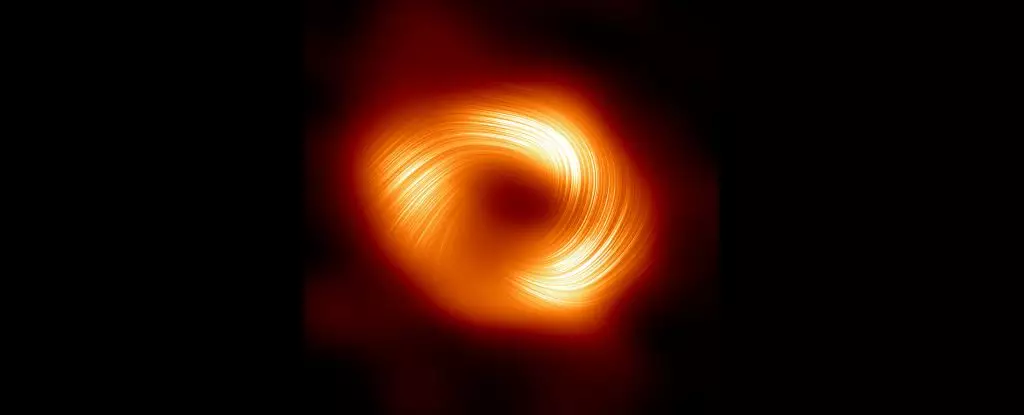Researchers have made an extraordinary discovery by revealing the magnetic fields that spiral around the supermassive black hole Sagittarius A* in our galaxy. Using twisted light to detect and measure the effect of polarization in a direct image of the shadow of Sgr A*, scientists have uncovered a magnetic field structure similar to that of the only other supermassive black hole shadow ever directly imaged, M87*. The revelation of strong, twisted, and organized magnetic fields near the black hole at the center of the Milky Way galaxy provides valuable insights into how black holes interact with the surrounding gas and matter.
Interpreting the Data from the Event Horizon Telescope
Capturing images of black holes is no small feat, and the Event Horizon Telescope (EHT) collaboration has dedicated years to collecting and processing data to produce images of Sgr A* and M87*. However, the task does not end with image creation; the next challenge lies in interpreting the data to unravel the mysteries of supermassive black holes. One method of achieving this is by examining the polarization of light oscillations influenced by the black hole’s environment. By analyzing the polarized light emitted by electrons accelerated along magnetic field lines, researchers can determine the structure and strength of the magnetic fields surrounding black holes.
According to astrophysicist Angelo Ricarte of the Harvard & Smithsonian Center for Astrophysics, imaging polarized light emitted by hot glowing gas near black holes allows scientists to directly infer the configuration and intensity of magnetic field lines that guide the flow of gas and matter feeding and ejecting from the black hole. By studying polarized light, researchers gain valuable information about astrophysics, the properties of gas, and the mechanisms involved in the feeding process of black holes.
Discovering Magnetic Fields around Sgr A*
The endeavor to detect the magnetic field of Sgr A* involved a two-stage process. Initially, researchers identified the polarization of light observed using eight different telescopes, including the Atacama Large Millimeter/submillimeter Array. Subsequently, scientists deciphered the significance of this data by mapping the magnetic field structure itself. The results unveiled a robust magnetic field swirling around Sgr A*, intertwined within the luminous dust cloud encompassing the black hole. Surprisingly, the magnetic field configuration around Sgr A* bore a striking resemblance to that of M87*, despite the notable differences between the two supermassive black holes in terms of mass and activity levels.
The similarities in magnetic field characteristics observed in Sgr A* and M87* indicate a potential universal and fundamental feature of supermassive black hole systems. The presence of strong magnetic fields around both black holes suggests a commonality in the physics governing these cosmic entities, regardless of their mass and activity disparities. This finding not only offers a new perspective for interpreting black hole behavior but also provides valuable insights into potential features to investigate further. Physicist Mariafelicia De Laurentis emphasizes the significance of understanding both the similarities and differences between black holes to enhance our comprehension of these enigmatic entities and unlock new revelations in the field of astrophysics.
The recent breakthrough in detecting and analyzing magnetic fields around supermassive black holes signifies a significant advancement in our understanding of these cosmic behemoths. By leveraging the power of twisted light and polarization imaging, researchers have unveiled crucial insights into the magnetic field structures that influence the interactions of black holes with their surroundings. This groundbreaking discovery opens the door to a deeper exploration of black hole physics and paves the way for future discoveries in the realm of astrophysics.



Leave a Reply